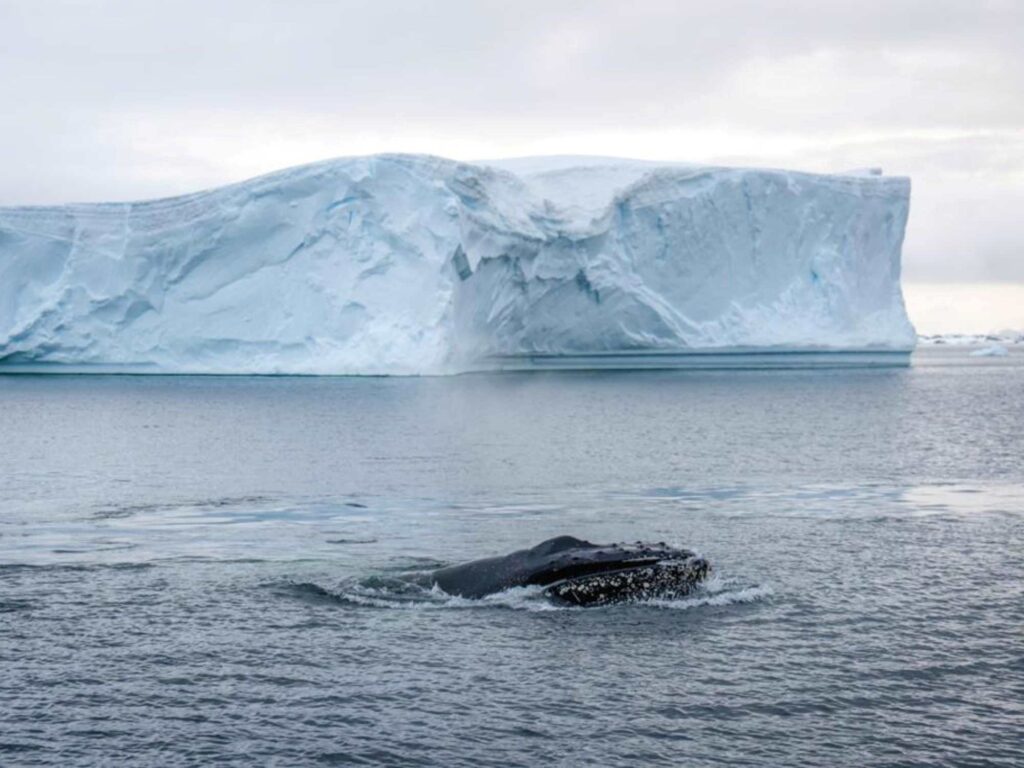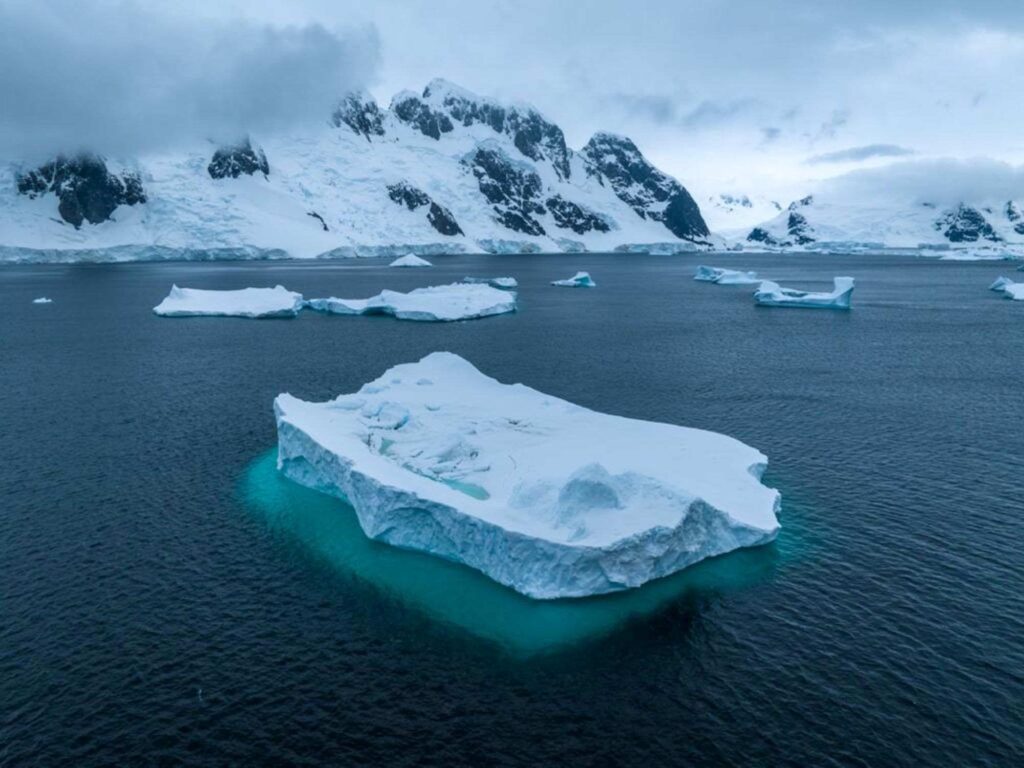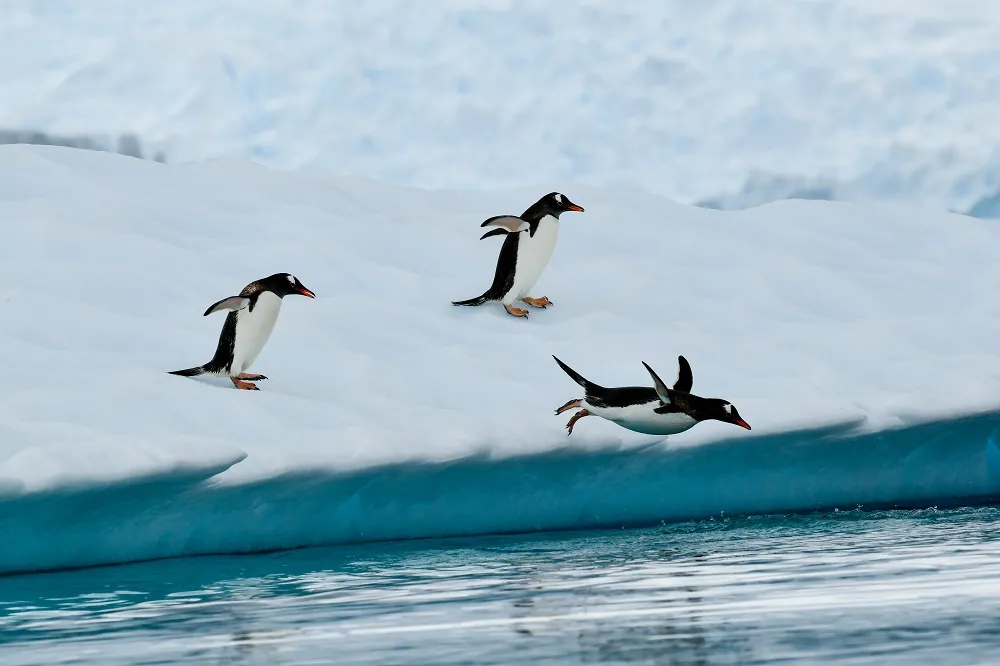Exploring antarctic wildlife: A guide to what you can see on your trip
Antarctica, the southernmost continent, is renowned for its breathtaking icebergs and extreme conditions. Despite its harsh climate, this frozen world is home to a fascinating array of wildlife. From penguins to whales, the fauna of Antarctica offers a unique and memorable experience for travelers. Here’s a guide to some of the remarkable animals you can encounter on trips to Antarctica.

The penguin kingdom
Where do penguins live?
Antarctica is famous for its penguins, which are among the most iconic animals of the region. The continent is home to several penguin species, including the Emperor and Adélie penguins.
- Emperor Penguins: The largest of all penguin species, Emperor penguins are known for their impressive size and distinctive black and white coloring. They breed during the Antarctic winter, laying their eggs in the coldest months when few other animals are active.
- Adélie Penguins: Smaller than the Emperor penguins, Adélie penguins are often seen in large colonies along the Antarctic coast. They are highly social birds, and their charming antics provide great opportunities for observation.
When planning a trip, it’s essential to know where do penguins live. Emperor penguins are found in the deep interior of Antarctica, while Adélie penguins inhabit the coastline. Tours often include stops at breeding colonies where you can witness these fascinating birds in their natural habitat.

Majestic whales of antarctica
The right whale
Among the diverse marine life, the Right whale is one of the most majestic creatures you may encounter on your journey. These massive whales, with their distinctive V-shaped blow and large bodies, are a true spectacle.
- Right Whales: They are named “right” because they were once considered the best whales to hunt due to their slow speeds and tendency to float after being killed. Today, they are protected and a rare sight. You can sometimes see these gentle giants during your Antarctic trip, particularly in areas where they feed on krill and plankton.
Whale watching is a highlight of many Antarctic expeditions. The experience of observing these magnificent creatures in their natural environment is unforgettable, and spotting a Right whale can be a rare and exciting event.

The curious isopod
What is an isopod?
While whales and penguins steal the spotlight, the Antarctic region also hosts fascinating lesser-known species. One such creature is the isopod.
- Isopods: These crustaceans can be found in the icy waters of Antarctica. Some species are particularly adapted to the cold, with unique adaptations allowing them to survive in extreme temperatures. For instance, the Antarctic isopod (Antarcturus spp.) is well-adapted to the frigid conditions and can often be seen on the sea floor.
Although isopods may not be as visually striking as penguins or whales, they play a crucial role in the Antarctic ecosystem. Observing these creatures provides insight into the diverse life forms that thrive in this remote environment.
The iceberg ecosystem
Icebergs and marine life
Antarctica’s icebergs are not only a stunning natural feature but also crucial to the continent’s marine ecosystem. Icebergs provide essential habitats for various species of marine life.
- Antarctica Iceberg: Icebergs serve as floating platforms for seals and birds. For example, Weddell seals are often seen lounging on ice floes, while seabirds such as skuas and petrels use icebergs as resting and nesting sites.
Travelers on trips to Antarctica will often witness the interplay between icebergs and wildlife. The sight of seals sunbathing on icebergs or birds diving for fish provides a fascinating glimpse into life in this icy realm.

Starting your antarctic adventure
Longyearbyen: Gateway to the polar regions
Before embarking on an Antarctic expedition, many travelers start their journey in Longyearbyen, a settlement in Svalbard, Norway. This town serves as a key departure point for trips to Antarctica and offers a unique opportunity to explore the Arctic environment.
- Longyearbyen: This northern town provides an excellent base for preparing for your Antarctic adventure. Here, you can learn more about the polar regions, prepare for the extreme conditions, and even spot some Arctic wildlife before heading south.
Antarctica’s wildlife is as diverse as it is captivating. From the majestic Right whales and charismatic penguins to the intriguing isopods and iceberg-adapted seals, the continent offers a unique glimpse into a world few people have the chance to see. Whether you are interested in marine life, birdwatching, or exploring the ice-filled landscapes, trips to Antarctica promise an extraordinary experience. Contact us!








